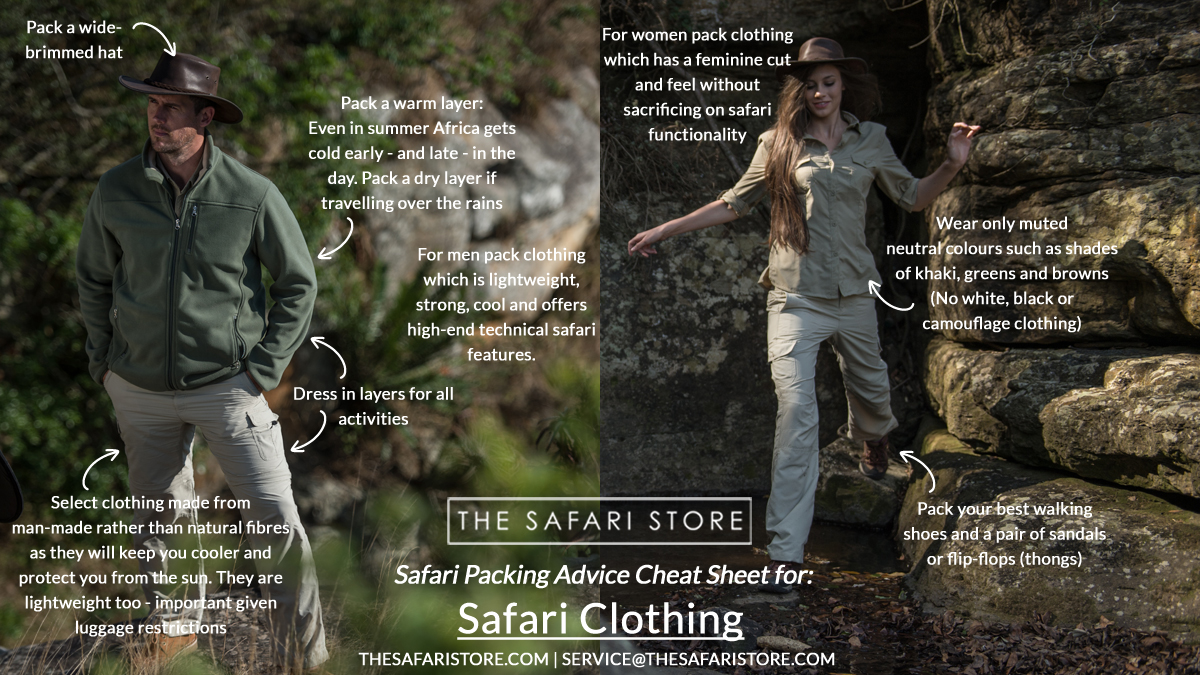When deciding on the best safari clothing to pack for your safari, let us be your guide into the world of what to wear in Africa.
Top 10 tips for selecting the best safari clothing.
Follow our safari clothing advice and you'll be comfortable, cool, protected, and assured that the safari clothing you pack is 100% safari suitable. Learn what safari clothing to pack - and what clothing not to pack - for your safari.
To get more insight into this list, please simply scroll down this page to where we elaborate further - and/or download our free packing list.
1.Dress in layers for all activities, with a warm layer essential in the mornings and evenings. Long-sleeved shirts with roll-up tabs and zip-off trousers allow you to adapt to local conditions.
2. Colour is key: Select safari clothing which is made from muted neutral and naturally-toned fabric such as shades of khaki, greens, and browns.
3. No white or black clothing: Please ensure that you do not go on safari wearing clothing made from fabric which is white or black - or shades of fabric which appear white in direct sunlight.
4. No camouflaged clothing: it is illegal in some African countries for civilians to wear camouflage safari clothing, so this is best avoided.
5. Man-made fabric vs cotton: As a general guideline, man-made fabrics (such as polyamide) outperform natural fabrics (such as cotton) - and so keep you cooler and better protected from the sun.
6. Pack a wide-brimmed hat: You will be out in the sun for long hours of the day and a good wide-brimmed hat is an essential.
7. Pack a warm layer: Even in mid-summer, it gets cold on the back of an open 4x4. Do not leave home without a safari jacket or fleece.
8. Pack a dry layer: When it rains in Africa, it tends to pour. If travelling during the rainy season, take a truly waterproof layer. Southern Africa tends to have rains November to April; East Africa gets rain in April/May and in November.
9. Pack light: Luggage restrictions on internal flights means that packing lightweight safari clothing is key. The bonus is the lighter the clothing, the more you can pack in.
10. Comfortable shoes: At the very least, take your best walking shoes and a pair of sandals or flip-flops (thongs).
Shop Men's Safari Clothing >








